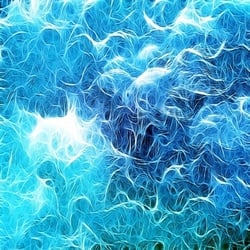

He’s just waiting to see if you are going to laugh at his joke!


He’s just waiting to see if you are going to laugh at his joke!
Also 90-95% of print failures are due to a bad first layer (citation needed).


No, but if I were still in school I would be extremely tempted to have it write out an essay instead of writing out pages. The only thing that kills it would be it obviously would not match my handwriting.


I saw that video, but I couldn’t remember the name of the channel. Great channel though.


The best part is there are hand writing generating programs or even web pages that convert text to gcode allowing you to use a 3d printer to write things out. In theory it should be really hard to pass it off as being human written, let alone match your own writing, but I’m sure it will only get better. I think there are even models to try to match someone’s writing.
your reference. Solidworks does have a point cloud tool but no idea how good it is. Working with surfaces in Solidworks usually is not hugely fun.
All I really need is to get the surface data into something other than a “mesh” format. My actual job is working with Catia V5, but my work does not have any of the applicable Catia licenses to directly work with mesh files (such as STLs). If I can get to that point I’m golden. I have plenty of experience working with and creating surfaces.
FreeCad can apparently make a step file from meshes with a few steps, but when I did that with a simple 1 2 3 block scan, the result was about 2.5GB’s, and tends to lock up anything that tries to open it. I may look into an open source program to create usable surfaces from point clouds instead of trying to use meshes.
Well, this is with a RevoPoint Pop2. This is 2 or 3 scans merged into 1, no editing outside of the scanning software. I’ve been extremely impressed at how well this can scan and produce a 3D printable STL. The only thing I haven’t figured out is how to get a file with the surfaces usable in CAD software. I can pull the STL in and see it, but not constrain it or create intersections with it.
For scanning, Epic Games has a phone app that I’ve seen seriously impressive results from just photogrammetry. I did not have very good luck with it, but it is definitely capable of great results. If you have a newer iphone, some of them have a depth sensor and apps available that can 3D scan.
If you want to scan primarily 3-8" objects the Pop2 is great. It’s even at what are probably clearance prices at Amazon right now ($400-450 USD). I bought mine used/open box directly from Revopoint via ebay for $400. Definitely get the turntable. It is definitely worth the extra $50.
Yes lol. Souvenir from the dinosaur casting museum in Tucumcari, NM.
The top fin kept the details, and you can tell there were scales, but all the fine lines are basically gone.


Two more pictures of the original and copy(s).
I really love the way Kde 2 and 3 looked back in the day. I love KDE Plasma, but KDE 3’s design just hits differently. Maybe I should try one of the KDE3 forks again for nostalgia’s sake. I think one of them added start menu search, which was the main pain point last time I tried one. Now to figure out how to install Trinity.


Wow this sounds a lot like my outlook with Ff7 remake. I begrudgingly bought it on steam when it was on “sale” for the still too high price of $40, and when it was good it was great, but other than one mission it is just the story of Final Fantasy VII up through Midgar with a stupid amount of boring fetch quests to pad the time. Saying it is maybe 33% fun engaging game/story 67% boring fetch missions or “go kill this boring monster” over there is in my opinion being very charitable.
Here are some screenshots of scans. The head is my scan of the included sample part, and the 1 2 3 block is a machinist tool that is exactly 1 x 2 x 3 inches. I 3D printed it, and with calipers it checked about .010" off per 1", or roughly 1% “small”. That is with zero CAD work or scaling.


I just recently got a Revopoint Pop 2, and I’ve been thoroughly impressed by it. I feel anyone looking at 3D scanners needs to keep expectations in check (they are not magic), and it takes work to get good scans, but personally I think it’s well worth looking at Revoscan. For hand size and up, the Pop 2 or Pop 3 are great size. The mini is for very small objects, and I’m not sure of the Range can do that small (but it looks SIGNIFICANTLY better for larger objects). I’ve only had it for a week, but do you have any questions on it?
Also, check their ebay store. I got the Pop 2 openbox that way directly from Revopoint, and it was only $350 for the base, or $400 for the complete kit with turntable, battery bank, and case. The turntable alone is DEFINITELY worth the extra $50.
Don’t threaten me with a good time.
I thought a hacked 3DS couldn’t play original NDS games without one of those ROM cards for the original DS. Can you run original DS games without it now?


My honest advice is don’t worry about the old lenses. Any camera should come with a comparable lens to the 18-55, and the 55-200 is not anything to base camera choice on. The only compact cameras that can properly use those lenses will be Canon’s discontinued EOS M series. It is a totally dead end system which has ceased development. I don’t think your lenses would work on the crop bodies of their new system, but the difference in price would make it a bad choice anyways. You can technically get an adapter to use the lenses on Sony’s cameras, but they will not work quite right in my opinion, will probably work much slower, have focus issues, and maybe even have issues with the stabilization causing blur.
That being said, I really think the Sony cameras would be the way to go, but look at the used market. At least in the US, Sony made so many cameras that the used older models go for a lot less money, so they are really cheap to pick up. The A5100 would be a great balance of small, good image quality (24MP), and I assume very cheap. The A6000 line would add an eye piece but be larger. The A5000 would be good but lower resolution (20MP), and the entire Nex line are older yet and mostly cap at 16MP. The 16-50 lens is super tiny when off, and in my opinion a very under rated lens.


Disclaimer: I am no expert by any means.
With that being said, as others have said, a DNS is like a phone book. By using PiHole with it going to a privacy respecting DNS service, you in theory eliminate being tracked by a DNS provider, but you do nothing to prevent your isp from tracking which ip addresses you access, and you do nothing to prevent search engines tracking which results you click on, you do nothing to prevent your web browser from tracking your browsing (especially on Chrome and Edge).
In summary:
DNS lookups: yes
ISP with IP addresses: no you would need a GOOD VPN or TOR and either one properly configured
Web browser: no, you need at least Firefox with data collection turned off, preferably with something like ublock installed.
Search engine: no, requires more research but supposedly duckduckgo and eccosia are privacy respecting *citation required


Ironically my favorite creamer is Irish, although not meant for everyday use.
St. Brendan’s Irish Cream (liquor)
Step 1. Never connect it to the Internet. Step 2. Connect Linux machine. Step 3. Profit.